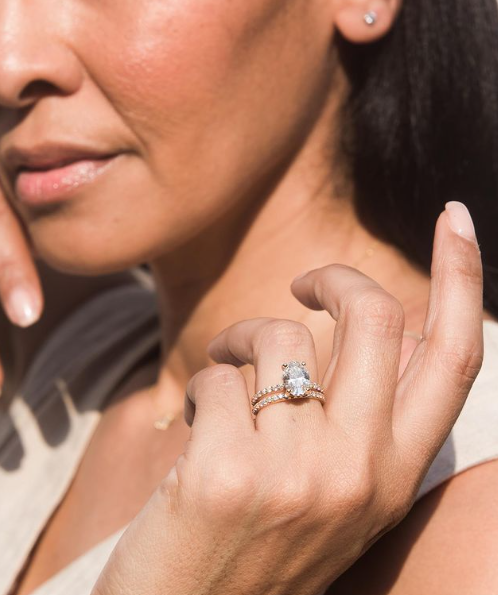The environmental impact and social issues linked with natural diamond mining are a discussion dominating the fine jewellery industry today. As the biggest players are finding ways of combating these problems, either by carbon off-setting programmes or more traceable supply chains, most of the industry is miles behind. The climate crisis puts no less pressure on the luxury industry than fast fashion. With consumers more concerned than ever about the origins of their products, there is no hiding behind labels any longer.
What happens when diamonds are mined
Natural diamonds take a [estimated] few million years to form naturally. It’s a race against time to mine the remaining diamonds on earth, making the stones more expensive and, in the worst cases, the mining methods merciless. The juxtaposition of the communities where diamonds are mined versus the product is abstruse. The results force communities to their knees by depleting farmable land resources and draining bodies of water in the search for this otherworldly stone [maybe] lying beneath the surface. Not only is this labour intensive, but the after-affects are unrepairable, leaving the inhabitants of these areas devastated. The air pollution seeps into the rest of the agricultural well-being of the community, meaning that those to whom this area is home are exposed to diseases and illnesses like malaria and respiratory infections.

Conflicts Diamonds and the Russia Loophole
Other than the environmental issues, which are usually glossed over with zero-emissions programmes, many diamonds still have origins of human rights abuses, like conflict diamonds or ‘blood diamonds’. As defined by the United Nations, a blood diamond is mined in an area controlled by forces, as opposed to the government, and sold to fund military action against the government. Historically, this was a black-and-white matter when civil wars were within diamond-rich parts of central Africa, so the movement of these stones could be monitored closely. In response to loopholes identified in the Fowler Report in 2000, the UN implemented the “Kimberley Process Certification Scheme” in 2003, a scheme to regulate the trade of rough diamonds. It says that to be able to trade them between one of its 85 participating countries, it must satisfy a minimum requirement.
This matter, and another loophole, has resurfaced recently in response to the Russia-Ukraine war, citing changes in how the diamond supply chain is tracked and filtered. Approximately 30% of the world’s diamonds come from Russian mines, and small diamonds, they are the world’s largest supplier. The problem arises when it isn’t clear whether funds raised from the diamond trade are circulating back to fund the Russian war against Ukraine. When rough they are mined in conflict areas and then sold to merchants or merged into stocks of legitimately mined diamonds, they look just like any other diamond. This raises a huge problem – that today’s ‘conflict’ diamonds are sitting in storefronts and jewellery cabinets worldwide, waiting to pull the wool over the eyes of an unsuspecting buyer. Though many brands have since stopped sourcing from Russia, this doesn’t mean jewellers are re-setting jewellery with non Russian diamonds, and it’s likely that most aren’t aware of the origins of every stone in these pre-made pieces either.
The honest jeweller with a crystal clear supply chain

Luckily, there are brands who saw this loophole early and wanted to act as an honest fountain of knowledge for their clientele. Do Amore, a lab and ethical diamond brand, proudly doesn’t source from Russia, and can provide buyers with a detailed chain of where their diamond came from, down to the names of those who cut and polished their diamond ring. Founder Krish Himmatramka explained that the decision to be transparent came from a place of emotion “It doesn’t make sense that products that symbolise love and commitment come with questions of ethics or it would raise moral dilemmas, [and] that rings, which are supposed to represent love and unity, cause harm and contribute to world destruction”. He realised that though others were saying they had ‘clean’ supply chains, there was no real way to prove this, so he decided to hold his brand accountable to this blasé approach to supply chain transparency.
Ethical and conflict-free jewellery is only the first step for an industry rife with more social issues than the common man can comprehend. But as with the next generation of clients, this young, fresh generation of jewellers are likely to bring a brighter, sparkly future to the world of diamonds.
Images via Do Amore on Instagram
